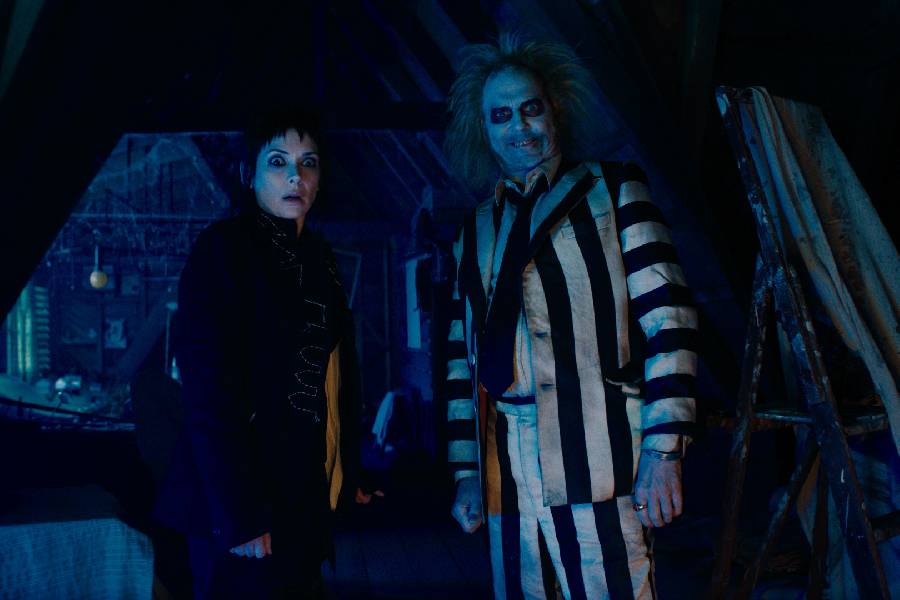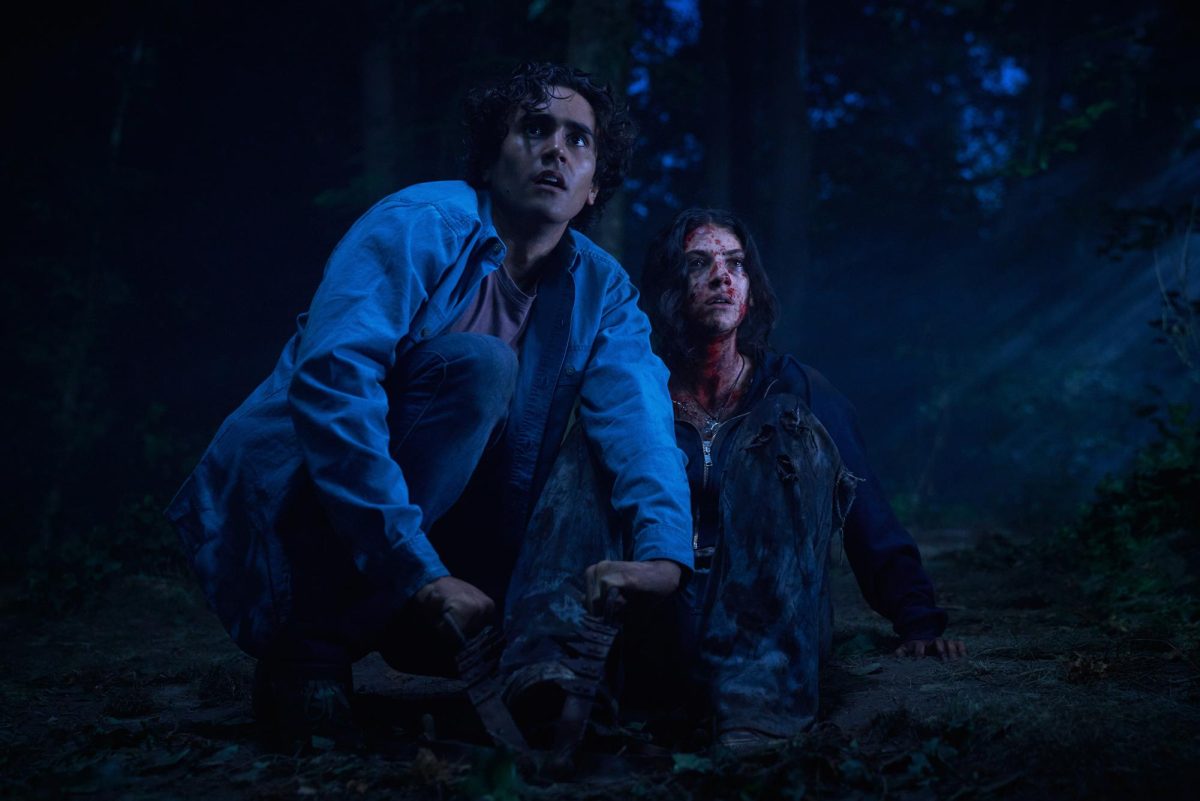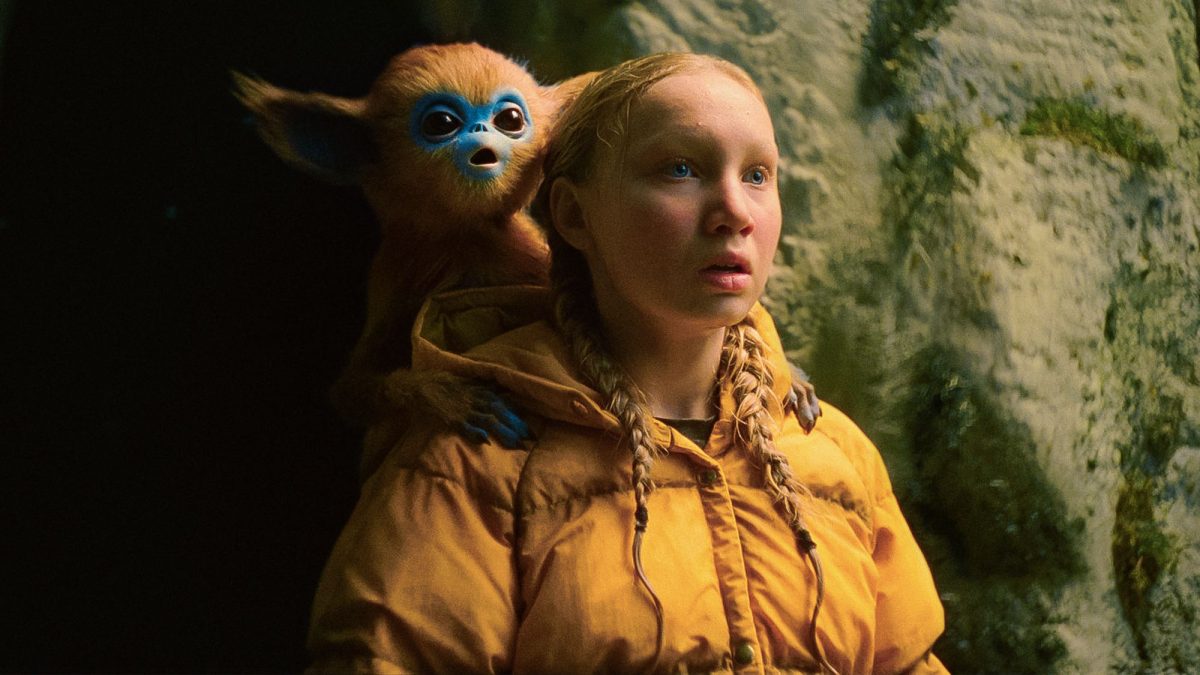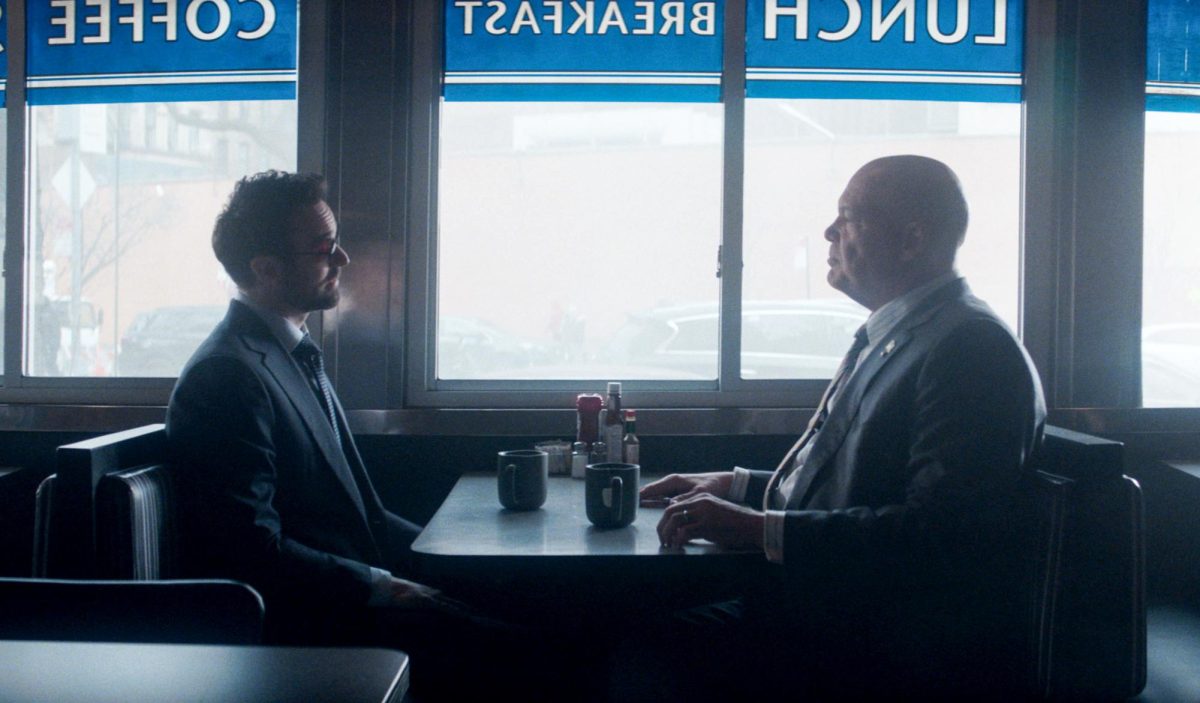3.5 out of 5.0 stars
“Beetlejuice” (1988), arguably the most iconic movie in director Tim Burton’s illustrious filmography, is a tough act to follow. Released on Sept. 6, after 36 years, the famed director took his shot with “Beetlejuice Beetlejuice.” Unlike Burton’s recent theatrical flops, this screwball, supernatural comedy might be a home run.
This wasn’t his first attempt at a Beetlejuice sequel, however. There was “Beetlejuice Goes Hawaiian,” written by Johnathan Gems, featuring Beetlejuice competing in a surf tournament. Seth Grahame-Smith, writer of Burton’s “Dark Shadows,” also developed a loose script, presumably without the watersports. Ultimately, both went nowhere — though Grahame-Smith’s work did earn a story writing credit for “Beetlejuice Beetlejuice”. Making it past the page, “Beetlejuice Beetlejuice” is the product of Burton’s recent partnership with actress Jenna Ortega and writers Alfred Gough and Miles Millar after their successful collaboration on the Netflix series “Wednesday” two years ago.
“Beetlejuice Beetlejuice” follows three generations of the Deetz family. Winona Ryder and Catherine O’Hara reprise their roles as Lydia and Delia, respectively, while Jenna Ortega plays Lydia’s daughter, Astrid. Lydia now hosts a successful paranormal talk show, Delia curates art exhibitions and Astrid attends an all-girls boarding school.
The film opens with Lydia being pulled off set by her boyfriend and producer, Rory (Justin Theroux), as she experiences a traumatic vision of everyone’s favorite sleazy shapeshifting demon, Betelgeuse (Michael Keaton). From there, the film frantically rushes forward, struggling to re-establish original characters while introducing new ones. The film is like a fever dream, bouncing back and forth between life as we know it and Burton’s richly imagined underworld.
Despite the absence of Alec Baldwin and Geena Davis — the main ghost couple from the original movie — “Beetlejuice Beetlejuice” has a loaded ensemble. Alongside Ryder, O’Hara, Keaton and Ortega are newcomers Theroux, Monica Bellucci, Arthur Conti and Willem Dafoe. Jeffrey Jones — now a convicted sex offender — does not reprise his role as Charles Deetz, Delia’s pretentious blowhard of a husband, though he does remain in the film as a headless torso played and voiced by uncredited actors. Frankly, it’s too many characters crammed into a runtime of just one hour and 45 minutes.
Too much, and yet not enough. The much-hyped, all-star cast is underutilized. Some characters, particularly Belluci’s Delores and Dafoe’s Wolf Jackson, serve no purpose at all. Delores, while initially framed as Betelgeuse’s prominent and vengeful ex-wife, practically drops off the screen. Wolf, a famous actor turned afterlife police detective, is a worthy foil to Betelgeuse in their scenes together, but adds little to the plot. Neither character contributes enough to the story to justify their inclusion. The film would’ve been better off scrapping one character to create more time for the other
Even with the bloated cast of characters, every performance is good and some are even great. Ryder, O’Hara and Ortega — especially in scenes with Theroux — have fantastic chemistry. Their bond also serves as the emotional center of the film — specifically, the rekindling of Lydia and Astrid’s mother-daughter relationship.
Yet everyone pales in comparison to Keaton as Betelgeuse. He chews up every scene, providing a through line of hilarity that somewhat offsets the tedium of less interesting plotlines. As an added bonus, Keaton seemed to have slightly more screen time than in the original, where he had a mere 17 minutes to make his everlasting impression.
In the last half hour, Burton’s genius finally emerges as he flawlessly channels the original film’s magic. The set design, costumes, color scheme, blocking and cinematography — amplified by Danny Elfman’s jubilant score — create an extraordinary experience that justifies any previous meandering or mediocrity.
“Beetlejuice Beetlejuice,” with its exuberant effects and vibrant color scheme, is a testament to old-school Hollywood filmmaking. Every set piece is intricate and larger than life, embodying and amplifying the hyper-stylized atmosphere of “Beetlejuice.” The characters, both alive and dead, could have been slapped together through CGI, but were instead individually designed with unique puppetry, costumes and makeup. CGI is still employed, but it’s just one of many tools in Burton’s toolbox.
Like its predecessor, “Beetlejuice Beetlejuice” is a zany farce that only Tim Burton could imagine. There’s gore, there’s gags, there’s grandiose musical numbers. But there’s also teenage angst, vengeful exes and very real human grief. He creates comedy from tragedy, unraveling human nature along the way. And, through the magic of Hollywood, he wraps the whole fantastical mess up in a glittery, happy-ending bow.
A home run, maybe not. But “Beetlejuice Beetlejuice” is one hell of a ride.




















